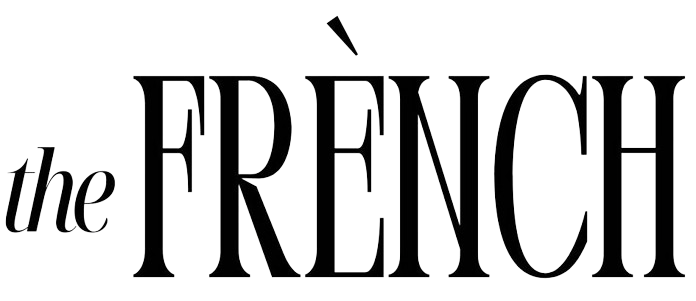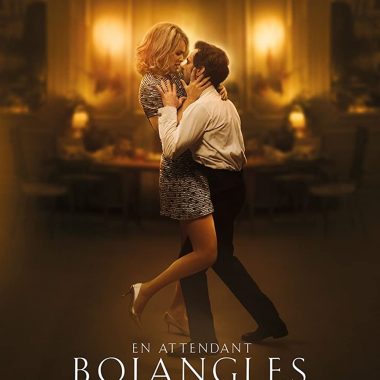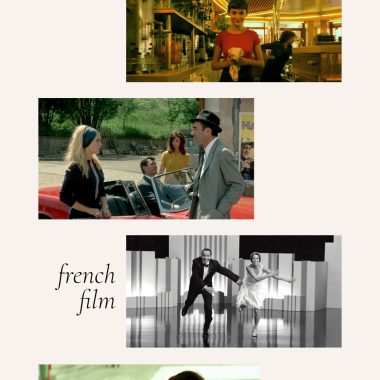Did you know that France has the largest film market of any country in continental Europe? The French love films perhaps even more than we Americans do, so it would make sense to collaborate on French-American movies once in a while!
Here is a list of the best French-American movies to watch if you love both cultures. These films combine American filmmaking expertise with French elegance.
I’ve already shared my favorite French films of all time, but these ones are especially near to my heart as they blend aspects of my two favorite countries: France and the United States.
2 Days in Paris
2 Days in Paris is a romantic comedy film released in 2007, directed, written, and starred by Julie Delpy. The film follows a couple, Marion and Jack, who decide to spend two days in Paris during their European vacation on their way back to New York City.
The story focuses on their experiences in Paris, exploring the beauty and history of the city while encountering various cultural differences and personal insecurities. The film portrays a humorous and witty approach to love and relationships while tackling themes of communication, trust, and the challenges of maintaining a long-term relationship.
Throughout the film, Marion and Jack navigate through a series of conflicts that arise from their own personal insecurities and cultural misunderstandings. The movie also features a range of quirky characters that add to the humor and cultural context of the film.
To Catch a Thief
To Catch a Thief is a classic thriller film released in 1955, directed by Alfred Hitchcock and starring Cary Grant and Grace Kelly. The story is set in the French Riviera and follows John Robie, a retired cat burglar who is suspected of a string of recent burglaries in the area.
In an attempt to clear his name, Robie joins forces with wealthy American heiress Frances Stevens, played by Grace Kelly, who is also staying on the French Riviera. Together, they set out to catch the real thief and prove Robie’s innocence.
The movie features a number of suspenseful scenes as Robie and Stevens investigate various suspects and try to solve the mystery of the burglaries. Along the way, they engage in a playful and flirtatious romance, adding to the film’s charm.
The film is known for its stunning cinematography, which showcases the beauty of the French Riviera and its glamorous lifestyle. The chemistry between Grant and Kelly, along with the classic Hitchcock suspense, make To Catch a Thief a beloved classic in French-American film history.
Charade
Charade is a classic mystery-comedy film released in 1963, directed by Stanley Donen and starring Cary Grant and Audrey Hepburn, filmed on location in Paris. The Charade story follows Regina Lampert, played by Hepburn, a recent widow who discovers that her late husband had been involved in criminal activities and that several men are now after the fortune he left behind.
As she tries to unravel the mystery and keep herself safe, Regina meets a charming and mysterious man named Peter Joshua, played by Cary Grant, who offers to help her. As the two of them work together to uncover the truth, they become entangled in a web of deception, betrayal, and romance.
The film is known for its witty dialogue, fast-paced action, and stylish visual aesthetics, which capture the glamour and sophistication of 1960s Europe. The chemistry between Grant and Hepburn is palpable, and their banter and flirtation add to the film’s charm.
5 to 7
5 to 7 is an independent romantic drama film released in 2014, directed and written by Victor Levin. The story follows a young American writer named Brian Bloom, played by Anton Yelchin, who falls in love with a slightly older French woman named Arielle, played by Bérénice Marlohe.
Arielle is already married and can only meet with Brian from 5 to 7 pm, as part of an arrangement that allows her to pursue affairs while still maintaining her marriage to a French diplomat living in New York. Despite the unconventional nature of their relationship, Brian and Arielle develop a deep and meaningful connection, causing Brian to grapple with his own values and beliefs about love and commitment.
The film explores themes of love, commitment, and cultural differences, as well as the societal expectations that surround traditional relationships. It also delves into the complexities of navigating an affair, with both characters struggling to reconcile their feelings with the reality of their situation.
The Dreamers
The Dreamers is a drama film released in 2003, directed by Bernardo Bertolucci and starring Eva Green, Louis Garrel, and Michael Pitt. The story takes place in Paris in 1968, during the tumultuous student protests that were happening at the time.
The movie follows the story of an American exchange student named Matthew, played by Michael Pitt, who becomes intimately involved with a French brother and sister, Isabelle and Theo, played by Eva Green and Louis Garrel, after they invite him into their bourgeois Parisian apartment. The three of them spend a lot of time together, discussing film, politics, and philosophy, and form a deep emotional bond.
As the protests in Paris intensify, their relationship becomes more complex, with tensions rising between Matthew and the siblings. The movie explores themes of sexuality, politics, and the rebellious spirit of youth, as the characters struggle to navigate their desires and beliefs amidst the chaos and uncertainty of the time.
The Dreamers is known for its artistic and cinematic style, as well as its explicit sexual content, which earned the film an NC-17 rating. It is a provocative and thought-provoking film that offers a unique perspective on the social and political issues of 1960s Paris.
Seberg
Seberg is a biographical thriller film released in 2019, directed by Benedict Andrews and starring Kristen Stewart in the title role of Jean Seberg. The movie follows the life of the iconic French actress and civil rights activist Jean Seberg during the late 1960s when she became the target of an FBI investigation due to her support of the Black Panther Party and other radical political causes.
As Seberg’s activism and personal life come under scrutiny by the FBI, she forms a relationship with Hakim Jamal, played by Anthony Mackie, an activist who becomes the target of the same FBI investigation. Seberg’s involvement with Jamal and the Black Panther Party leads to her being targeted by the FBI, which used illegal surveillance and other tactics to disrupt and undermine political dissidents.
The film explores themes of surveillance, paranoia, and the abuses of power by government agencies, as well as Seberg’s struggles with mental health issues and her personal life. Kristen Stewart delivers a powerful performance in Seberg, capturing both her public persona and her private struggles with nuance and depth.
Midnight in Paris
Midnight in Paris is a romantic comedy-fantasy film released in 2011, directed by Woody Allen and starring Owen Wilson, Rachel McAdams, and Marion Cotillard. The story follows Gil, played by Owen Wilson, a successful Hollywood screenwriter who is struggling to find inspiration for a new project.
While on a trip to Paris with his fiancée Inez, played by Rachel McAdams, Gil finds himself transported back in time to the 1920s, a golden age of literature, art, and culture. There, he meets many of the great creative minds and artists of the time, including Ernest Hemingway, F. Scott Fitzgerald, and Pablo Picasso, and falls in love with Adriana, played by Marion Cotillard, a young woman who embodies the spirit of the era.
As Gil continues to visit the past each night at midnight, he becomes increasingly disillusioned with his own life and longs to stay in the past forever. The film explores themes of nostalgia, creativity, and the romanticization of the past, as well as the contrast between different eras and the way that people perceive them.
Midnight in Paris is known for its whimsical and charming tone, as well as its stunning visuals and lush depictions of Paris. The film is truly a love letter to the City of Light and its cultural heritage, and it has become a beloved classic for its warm and nostalgic portrayal of the past.
The DaVinci Code
The Da Vinci Code is a mystery-thriller film released in 2006, directed by Ron Howard and starring Tom Hanks, Audrey Tautou, and Ian McKellen. The movie is based on the bestselling novel of the same name by Dan Brown and follows the story of Robert Langdon, a Harvard symbologist who is called to investigate a murder at the Louvre museum in Paris.
As Langdon and cryptographer Sophie Neveu, played by Audrey Tautou, begin to unravel the clues left behind at the scene of the crime, they discover a conspiracy involving a secret society called the Priory of Sion and the search for the Holy Grail. The two of them must race against time to follow the trail of clues across Paris, London, and Scotland, as they attempt to uncover the truth and evade those who would do anything to keep it hidden.
The film explores themes of religion, history, and the power of secrets, as well as the complex and often contested relationship between the Christian church and the legacy of Jesus Christ. The movie is known for its fast-paced action, thrilling suspense, and complex twists and turns, which keep the audience guessing until the very end.
Breathless
Breathless, known in French as À bout de souffle, is a classic French New Wave film released in 1960, directed by Jean-Luc Godard and starring Jean-Paul Belmondo and Jean Seberg. The movie tells the story of Michel Poiccard, a young criminal who steals a car in Marseille and drives to Paris, where he begins a crime spree and meets an American woman named Patricia Franchini.
As Michel and Patricia begin a romance, they are pursued by the police, and Michel’s reckless and impulsive behavior puts them both in danger. The film is known for its innovative style and its use of jump cuts, natural lighting, and improvised dialogue, as well as its portrayal of a new generation of young people who are disillusioned with traditional values and societal norms.
Breathless is a landmark film in the history of cinema and is widely regarded as a masterpiece of the French New Wave movement. It has had a profound influence on filmmaking, with its fresh and innovative approach to storytelling and its non-traditional techniques inspiring generations of filmmakers to come. The movie is celebrated for its stylish and experimental cinematography, its iconic performances by Belmondo and Seberg, and its portrayal of a new era of youth culture and rebellion.
Paris Je t’aime
Paris Je t’aime is a romantic drama anthology film released in 2006, executive produced by Emmanuel Benbihy. The movie consists of 18 short films, each telling a story about love and relationships in Paris, and directed by different international directors, including Joel and Ethan Coen, Wes Craven, Alfonso Cuarón, and Gus Van Sant, among others.
Each of the films is set in a different Parisian neighborhood and features a diverse cast of characters, exploring a range of relationship-driven themes such as love, loss, redemption, and second chances. The movie weaves together a diverse tapestry of stories and personalities, capturing the essence of the City of Light and its vastly different daily interactions.
Natalie Portman stars in a segment in the film called “Faubourg Saint-Denis,” directed by French filmmaker and actor, Tom Tykwer. In the segment, Portman plays an American actress named Francine who is in Paris to audition at the Conservatoire national supérieur d’art dramatique. She meets a blind Frenchman who knows the city like the back of his hand and can’t help but follow his lead.
Paris Je t’aime is known for its rich and vivid portrayal of Paris, with each segment providing a unique and nuanced glimpse into the city’s many facets. The film is celebrated for its exploration of the complexities of love and human relationships, as well as its celebration of the diversity and vibrancy of the people who call Paris home.
Funny Face
Funny Face is a musical romantic comedy released in 1957, directed by Stanley Donen and starring Audrey Hepburn and Fred Astaire. The movie tells the story of Jo Stockton, a shy and bookish young woman who works in a bookstore in Greenwich Village, New York.
When a fashion magazine editor, Maggie Prescott, and her photographer, Dick Avery, discover Jo, they convince her to model for their magazine and take her to Paris for a photoshoot. In Paris, Jo falls in love with Dick and begins to embrace her own unique sense of style and fashion, while also developing a close friendship with the philosopher and bohemian, Professor Flostre.
Funny Face is celebrated for its vibrant cinematography, its iconic fashion designs by couturier Givenchy, and its unforgettable musical numbers, including the beloved songs “S’Wonderful” and “How Long Has This Been Going On?” The movie is also known for its sparkling performances by Hepburn and Astaire, who light up the screen with their chemistry and charisma.
Funny Face is a classic Hollywood musical set in Paris that captures the glamour and excitement of 1950s France, while also exploring timeless themes of love, identity, and self-discovery.



